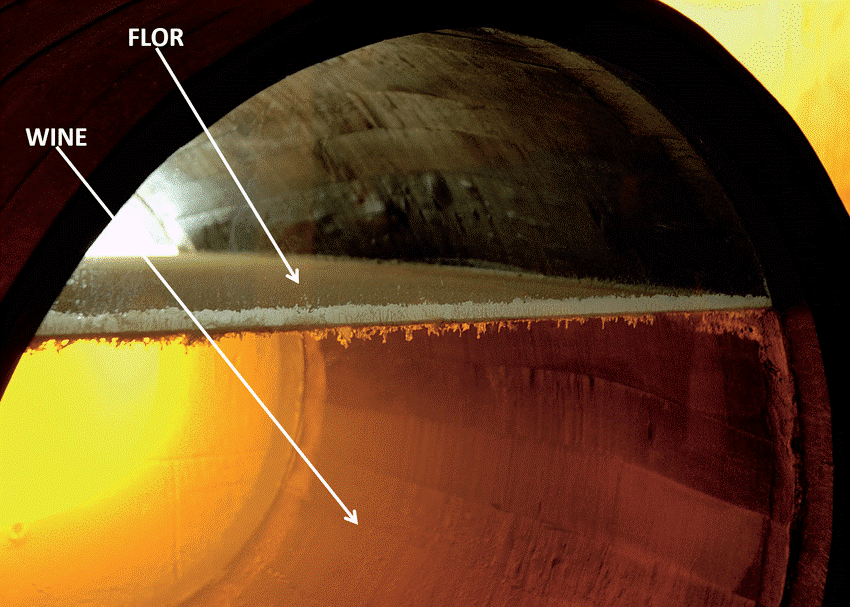I thought an interesting angle to these blogs would be to look at wines and categories of wines which are maybe less familiar or drunk less often under a general banner of (Off the Beaten Track).
In an occasional series of blogs, I will look at categories and wines on the Wine Trust list that fit into these areas, including less fashionable categories, unfamiliar grape varieties and wine regions (these two are often interlinked of course).
Whilst all wine retailers need to tick the important well-loved and fashionable boxes for wine, a more proactive and interesting company will also look to champion the new producers, up and coming countries and regions, off piste grape varieties, and, frankly, just downright high quality wines which both refresh the list and offer something new and hopefully stimulating for the adventurous wine drinker.
This is part of the very ethos of Wine Trust and its selection process, and therefore this is the first edition of a look into the depth of the range offering of the company. And to start with a look at the category of Fortified Wines – with highlighted suggestions – and how you can enjoy them in the summer months, including port!
One of the great things about these wines is they all offer excellent value for money – a little goes a long way and they last very well so you can drink them over a number of days and occasions.
Fortified Wine Part 1
As the name maybe implies “fortification” simply means strengthening (as with a castle or battle defences) a wine through the addition of extra alcohol, usually in the form of grape brandy. Historically this practice may have come about as a means of preserving a table wine when being shipped over long distances and maybe in warm conditions. Around for centuries, these wines remain as iconic today as ever in their history. They have drifted in and out of fashion, but I would implore you to find a place in your wine drinking regime to try these – few wine categories can deliver such hedonistic experiences at these wines do.
However, the addition of a high strength spirit to a wine gives the winemaker the potential to extend the aging process as alcohol is itself a preserving agent. Another particularly important option for fortification is if you want to make a sweet wine.
So, what happens if a winemaker deliberately adds high strength spirit (by that at 90%+ by volume alcohol!) to a fermenting wine, which say has already reached 6-7% by volume (ie ½ way towards being a finished dry wine), with the yeast feeding voraciously on the remaining sugar left in the juice? Such is the shock to the yeast with this bludgeoning “Monty Python foot” style hammering that they are killed outright by the level of alcohol. But if they have not feed on all the sugar in the juice the wine is not only significantly higher in alcohol (up to 21% by volume in port for example) but also sweet! And quite simply this is how Port wine is made – and of course it is also red in colour because the grapes used are black.
Port

The beautiful, rugged Douro Valley
Port is made in the hot, rugged Douro region of Portugal and always is a blend of indigenous Portuguese grapes, led by the superb Touriga Nacional variety. After fortification, the finished port wine can be aged in a number of ways and styles subject to its vineyard origins and quality desired. Most everyday drinking ports are a blend of years and bottled young and ready for immediate consumption – these are often referred to as “Ruby” Port after their young vibrant colour. A diversification in this category is the superior “Late Bottled Vintage” style which, as the name infers, is from a single vintage year and superior graded vineyards sources. This is aged in cask from 4-6 years before bottling and ready for consumption.

Traditional Foot Treading – Port production – still used in a few Quintas (farms) and for certain special wines
A complete contrast to this style, are the immaculate Reserve Tawnies, which spend most of their aging time in large old casks (sometimes called Pipes in the Douro). Through this extended, gently oxidative, handling these ports acquire their lovely Tawny colour (hence the name) and develop wonderful toffee, nutty and crème caramel notes. Usually a blend of years a Reserve Tawny Port must be a minimum of 7 years old by law (6 years in cask), although the vast majority are aged and bottled after extended periods – usually 10,20,30,40 years average age – becoming even more tawny in colour and refined in flavour. You can get a vintage (single year) Reserve Tawny – called “Colheita” – and these will always tell you the year of bottling so you can see how many years it spent in cask.
Probably the most famous “name” in Port is the Vintage (proper) style. These wines are only made in exceptional years of perfect growing conditions and from the top A grade vineyards (or Quintas (farms) which they are referred to in the Douro). Vineyards are graded – rather unromantically – from A (the best) to F. By law, these wines are bottled after just a couple of years in cask and always unfiltered hence why over time the famous Vintage Port sediment is formed which must be decanted prior to serving in the glass. As aging takes place in the bottle (away from any oxygen) the process is slow and complex – resulting in the most wonderfully rich and intense port style of all – and often taking 20-30 years to reach full maturity. No wonder it was the (still fashionable) gift to buy for a child’s 21st birthday! And therefore, you must always decant Vintage Port prior to serving, to separate out the clear wine from the heavy lees sediment that forms over time.
Port in the summer?! Yes, the style to go for is the Reserve Tawny and do please chill them down in the fridge first. They go well with cheese – of course – but also savoury dishes such as cured hams, cheesecake, ginger cakes, nuts and pâtés, chocolate, and crème brûlée. Try the superb Fonseca 10-year-old tawny
This does not need decanting and once opened can be enjoyed over a period of 2 weeks or more – keep it in the fridge.
Sherry
The other very traditional and famous fortified wine – this time from the area of Jerez (pronounced “Hair-reth”) in Spain which was the origin of the derivate of the English name “Sherry”.
And please put away any stereotypes about Sherry – it was not the drink of grannies and dipsos from previous generations and has been unfairly and wrongly tarnished.
Sherry is made in three main styles – Fino/Manzanilla, Amontillado and Oloroso. Most sherries are made from the Palomino grape, although there is another grape – Pedro Ximénez – which can also be used in blends or on its own (more to follow). All true sherry is made as a bone-dry drink, so fortification always takes places after fermentation has been completed by the yeast. All sherry is also cask aged and has some of the most complex blending programmes between casks of any wine in the world. And behind the production of Fino/Manzanilla and Amontillado lies one of the wonders of nature and winemaking – a post fermentation natural yeast called Flor.

May the Flor be with you
After the base sherry wine has been made and fortified (to about 15.5% abv, so lower than port for example) they are put into large old oak casks – called butts – and an air space is deliberately left above the wine (please see picture). This dark and humid environment encourages the natural formation of the Flor yeast which covers the wine like a duvet. Two important things then happen – first this blanket protects the wine from oxidation. Second, the yeast starts to feed on the wine and subtlety changes its character imparting notes of dough, camomile, and green olive. This process takes at least 5 years and its enhanced by careful and skilful cross blending between casks. When the yeast eventually dies most of the wines are then bottled and labelled as Fino. A Manzanilla is also a Fino but is made in the neighbouring town of Sanlucar de Barrameda, which being nearer the coast is said to be more humid and imparts a stronger Flor character as result.
There is though another aging option open to the producer. Rather than bottle the Fino they can age it further in cask to create an amber, piquant style of sherry – called Amontillado. The extra processes for this wine also include refortifying (to around 17.5%) and filling the cask back up to the top – before aging for anything from another 5 to 20 years! However, this act of nature (flor) occasionally does not happen in odd casks and these are immediately refortified (to around 18%), fully topped up and then aged extensively for anything from 8 to 20+ years. These sherries are classified as Olorosos – and develop into a tangy and nutty style.
Whilst all sherries are made in a dry style there is the option to sweeten them at the point of bottling. Traditionally done for the UK market, the Pedro Ximénez grape (now often abbreviated and referred to as “PX”) was sun dried to raisin, then partly fermented to make a rich and sweet wine, then used as a sweetening component in the final medium dry or sweet (Cream) sherry. In recent times Pedro Ximénez became a star in its own right- and bottled on its own solely as a sweet, dessert style sherry – fashionably poured on vanilla ice cream as a pudding option.
Do try the dry, crisp and zesty single vineyard Inocente Fino Sherry from the revered house of Valdespino – great aperitif with olives, nuts, and general canapés – and terrific with Tapas style snacks especially Calamari and anchovies.
Serve chilled from the fridge – you can enjoy over a period of a week in kept in the fridge and under vacuvin
Or try the hedonistic, liquid caramel style sweet sherry from Lustau – and yes pour it over your vanilla ice cream it really does work! Otherwise any rich puddings including chocolate
Serve very well chilled from the fridge – you can enjoy over a period of two or three weeks in kept in the fridge
